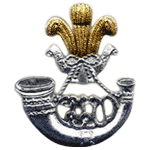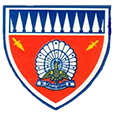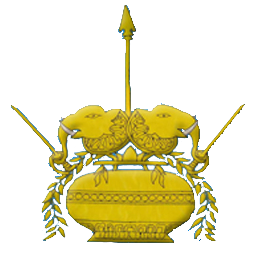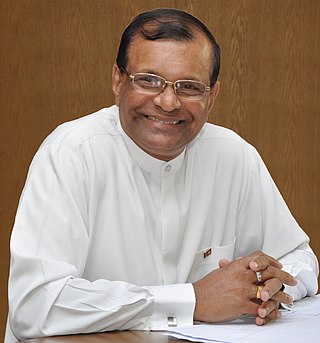The Defence Services Command and Staff College (DSCSC) is situated at Batalanda, Makola (South) 12 Kilometers away from Colombo and its aim to develop the professional knowledge and understanding of experienced officers of the Sri Lanka Army, Sri Lanka Navy & the Sri Lanka Air Force to prepare them for the ranks of junior field officers in the army and the respective ranks of the Navy and Air force. The DSCSC was formerly known as the Sri Lanka Army Command and Staff College (ACSC).

The Sri Lanka Armoured Corps (SLAC) provides the armour capability of the Sri Lanka Army, with vehicles such as the T-55AM2 main battle tank; the BMP infantry fighting vehicle; and the BTR-80 and WZ551 armoured personnel carriers. It comprises five regular armoured regiments, a volunteer regiment, and a regimental band. It has an independent Armoured Brigade and is headquartered at Rock House Army Camp, Colombo.

The Sri Lanka Artillery (SLA) is the artillery arm of the Sri Lanka Army. It is made up of ten regular regiments and two volunteer regiments. The SLA is headquartered at Panagoda Cantonment, Panagoda.
The Sri Lanka Signals Corps (SLSC) is a combat support corps of the Sri Lanka Army, responsible for providing military communications, information technology and electronic warfare support. The corps is made up of a signals brigade, ten regular regiments and one volunteer regiment. It is responsible for installing, maintaining and operating all types of telecommunications equipment and information systems. It is headquartered at the Panagoda Cantonment.

The Sri Lanka Light Infantry (SLLI) is the oldest regiment in the Sri Lanka Army and the oldest infantry regiment in the army. It is made up of sixteen regular battalions and nine volunteer battalions, and is headquartered at the Panagoda Cantonment, Panagoda.

The Sri Lanka Sinha Regiment (SLSR) is an infantry regiment of the Sri Lanka Army; it is the second oldest infantry regiment in the army.

The Gajaba Regiment (GR) is an elite infantry regiment of the Sri Lankan Army. Formed on 14 October 1983 at the Saliyapura Camp in Anuradhapura, it is named after the famous Sinhalese King Gajabahu the First. It consists of 14 regular battalions and 6 volunteer battalions.

The Gemunu Watch (GW) ("King Dutugemunu's Own") is a infantry regiment of the Sri Lanka Army, formed with troops from the Ceylon Light Infantry and the Ceylon Sinha Regiment in 1962. It has been deployed in many major operations against the LTTE. It is made up of 14 regular units and 9 volunteer units. Headquartered at Kuruwita Army Camp, Ratnapura. It is named after one of the most famous Lankan Kings, King Dutugemunu.
The National Cadet Corps is a youth organisation in Sri Lanka, sponsored by the Ministry of Defence, which operates in schools, and normally includes Army, Navy and Air Force sections. The corp is open for secondary school students on voluntary basis and its officers are government teachers and educational administrators, who serve as instructors. The Cadets are given basic military training in small arms and parades, as well as leadership training.

Major General Janaka Perera, RWP, RSP, VSV, USP, VSP was a Sri Lankan General and politician. He served as the Chief of Staff of the Sri Lanka Army and is considered one of the most distinguished generals in Sri Lankan history. After retiring from the army he served as a Sri Lankan High Commissioner to Australia and Ambassador to Indonesia. He was the opposition leader of the North Central Provincial Council until he and his wife were killed on 6 October 2008 by a suicide bomber. The LTTE have been blamed for the bombing by Sri Lankan president Mahinda Rajapaksa.

Joseph Everard Denis Perera was a senior Sri Lanka Army officer who served as Commander of the Sri Lankan Army from 1977 to 1981. He was also the Sri Lankan High Commissioner to Australia, Chairman of the Securities and Exchange Commission and the Ceylon Tobacco Company and Chancellor of General Sir John Kotelawala Defence University. He envisioned for a women's corps in the army which resulted in the creation of the Sri Lanka Army Women's Corps in 1979. He is regarded as the father of the Sri Lanka Army Women's Corps.

Security Forces Headquarters – Wanni is a regional command of the Sri Lanka Army, that is responsible for the operational deployment and command all army units stationed in and around the southern part or the Vanni region of the Northern Province, this includes several divisions and the independent brigades. Currently due to ongoing combat operations it is the largest command in the country. It is one of the five Security Forces Headquarters and the General Officer Commanding it is one of the most senior officers in the army, the post is designated as Commander Security Forces Headquarters - Vanni. The current Commander SFHQ-W is Major General Hemantha Bandara. The SFHQ-W is based at the defense complex at Vavuniya.
Military Secretary is a senior position in the General Staff of the Sri Lanka Army, the post is held by a senior officer of the Major General rank. The Military Secretary's Branch is responsible for handling all matters pertaining to officers such as promotions, postings and discipline of the Sri Lanka Army. The current Military Secretary is Major General S.W.M Fernando WWV RWP RSP VSV USP ndc psc. He assumed office on December 21, 2022.

Major General Gammanpila Arachchige Chandrasiri, RWP, USP, ndc, psc, SLAC was a Sri Lankan senior army officer and a provincial governor. He is the Governor of Northern Province. He was the former Commander Security Forces Headquarters - Jaffna ; General Officer Commanding, 52 Division;, Director General - General Staff, Joint Operations Headquarters; Brigade Commander Armoured Brigade, and Commander, Area Headquarters Mannar.
Major General M.C. Mendaka. P. Samarasinghe, RWP, RSP, USP, ndc, psc, SLE was a Sri Lankan general, he was a former Chief of Staff, Sri Lanka Army and also the former Commander Security Forces Headquarters - Jaffna; he was also the General Officer Commanding, 22 Division.
General Lionel Piyananda Balagalle,, was a senior Sri Lanka Army officer, who served as the Commander of the Sri Lanka Army and the Chief of the Defence Staff. He is known for formalising military intelligence operations within the Sri Lanka Army, having founded the Directorate of Military Intelligence and the Military Intelligence Corps.
Major General Channa Gunathilaka, RSP, USP, ndc, psc, SLE was a senior officer of the Sri Lanka Army, who was the current Deputy Chief of Staff of the Sri Lanka Army. He was the former Commandant of the Sri Lanka Army Volunteer Force, Security Force Commander (Central), Military Secretary, Security Force Commander (Kilinochchi), GOC - 56th Infantry Division, GOC - Mannar.
Security Forces Headquarters – Central (SFHQ-C) is a regional command of the Sri Lanka Army, that is responsible for the operational deployment and command all army units stationed in the Central and Southern parts of the island, this includes two divisions. The current Commander SFHQ-C is Major General M K S Silva RWP RSP ndu. The SFHQ-C is based at the Diyatalawa Garrison.
Commandant Sri Lanka Army Volunteer Force (SLAVF) has been the title of the head of the Sri Lanka Army Volunteer Force. The post is held by a regular officer of the rank of major general and is the fourth senior position in the army. Commandant is in charge of the Volunteer Force Headquarters and is assisted by a deputy commandant.
Mohammed Jubayer Salehin SUP, ndu, psc is a major general of the Bangladesh Army. Currently attached in Ministry of Foreign Affairs. Beforehand he served as Director General of Bangladesh Institute of International and Strategic Studies. He was adjutant general at army headquarters. Prior to join AG, he was Engineer-in-Chief at the Bangladesh Army. Earlier, he served as commandant of Defence Services Command and Staff College (DSCSC) since 24 January 2021.














